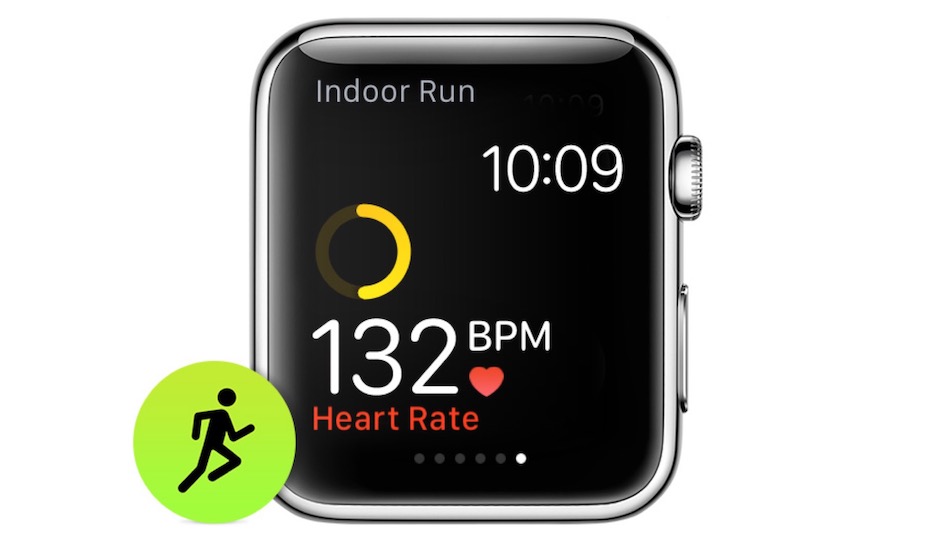As if getting motivated to work out isn’t difficult enough, there’s also the question of whether or not you’re working out hard enough. The level at which you work out is generally described in terms of your workout “intensity”. Now don’t get me wrong here. You can achieve significant health benefits with as little as 30 minutes of low-intensity exercise (leisure walking, slow jogging or casual swimming).
But, I must emphasize that moderate-to-high-intensity forms of exercise (running, cycling intervals up steep hills or lap swimming) tend to result in greater improvements in cardiovascular function and physical fitness.
I should also mention that if your workout goals are centered on weight loss, mixing low-to-moderate-intensity exercise with short bursts of high-intensity exercise (high-speed sprints, Tabata training or other high-intensity interval training/HIIT workouts) can greatly enhance fat-burning potential and weight loss over time.
How exactly do you know if your workouts are intense enough? Well, monitoring your exercise heart rate (the number of heart beats per minute) is one of the best ways to estimate your workout intensity.
Related Article: How to Perform Cardio Exercise the Right Way
Monitoring your exercise heart rate (the number of heart beats per minute) is one of the best ways to estimate your workout intensity.
Measuring Your Heart Rate
Depending on your desired workout intensity, your heart rate should be within a certain target range. Many cardiovascular (cardio) machines (treadmills, stair climbers, ellipticals, and stationary bikes) allow you to electronically monitor your heart rate during exercise.
Problem is, the recommended target heart rate zone depicted on most machines may not be right for you, as it’s based solely on a general equation known as the age-predicted maximum heart rate (MHR).
Age-Predicted MHR
208 – (0.7 x Age) = MHR
Depending on what goal(s) you’re trying to achieve, your target heart rate zone is determined as a percentage range of your maximum heart rate as shown below.
MHR Target Heart Rate Zone
Low-Intensity Exercise/General Health
55-65% of MHR
Moderate-Intensity Exercise/Fitness/Fat-Burning
65-85% of MHR
High-Intensity Exercise/Cardiovascular Endurance
Above 85% of MHR
The following example uses a 25-year-old woman who’s trying to get fit by working out at a moderate-intensity level.
Age-Predicted MHR
208 – (0.7 x Age) = MHR
208 – 17.5 = 190.5
Target Heart Rate Zone
MHR x 0.65 = (low target) MHR x 0.85 = (high target)
190.5 x 0.65 = ~124 190.5 x 0.85 = ~162
As you can see, this 25-year-old woman would have to work out at an intensity that’s high enough to spike her heart rate somewhere between 124 and 162 beats per minute.
Now, it’s important to understand that when maximum heart rate is used to determine your target heart rate zone individual differences are not taken into account. This essentially means that a woman (or man) of the same age would have the exact same heart rate zone regardless of other relevant factors such as body weight, stature, and fitness level.
So, how can you determine what target heart rate zone is right for you?
Well, lucky enough, there’s a simple solution.
The resting heart rate is actually a great marker of cardiovascular function and general fitness. In fact, during routine office visits health professionals usually take a resting heart rate by placing two fingers on your radial pulse (located on the wrist) or by way of a pulse oximeter in order to get a quick marker of your health status.
A healthy average for resting heart rate is generally between 60 and 100 beats per minute. However a well-trained endurance athlete may have a resting heart rate as low as 30-40 beats per minute. A relatively low heart rate at rest is generally indicative of enhanced fitness due to a more efficient cardiovascular system.
Related Article: The Seven Principles of Exercise
Obviously with such a large range of possibilities for the resting heart rate, recommended target heart rate zones depicted on cardio machines simply can’t account for endless variations between different people. While the heart rate reading itself is okay, the best way to know what target heart rate zone works best for you is to factor in your own resting heart rate.
Determining Your Resting Heart Rate & Target Heart Rate Zone
While the heart rate reading itself is okay, the best way to know what target heart rate zone works best for you is to factor in your own resting heart rate.
Resting heart rate is best determined in the morning after a good night’s rest. Before taking the measurement, allow your body a few minutes to adjust to the natural shift from sleeping to waking up. When you’re ready to measure your resting heart rate, take your index and middle fingers together on the opposite wrist about 1/2-inch on the inside of the joint, in line with the index finger.
Once you feel a pulse, count the number of beats you feel for one minute.
After you’ve determined your resting heart rate you can use what’s called the heart rate reserve (HRR; the difference between your predicted maximum heart rate and resting heart rate) to determine your new target heart rate zone (Note: Target heart rate zones change a bit when heart rate reserve is used).
HRR Target Heart Rate Zone
Low-Intensity Exercise/General Health
40-60% of HRR
Moderate-Intensity Exercise/Fitness/Fat Burning
60-85% of HRR
High-Intensity Exercise/Cardiovascular Endurance
Above 85% of HRR
Age-Predicted MHR
208 – (0.7 x Age) = MHR
HRR Determination
MHR – RHR = HRR
Target Heart Rate Zone
RHR + (HRR x 0.40) = (low target) RHR + (HRR x 0.85) = (high target)
Using the same 25-year-old woman from before, let’s factor a resting heart rate value of 65 beats per minute into the equation at a moderate-intensity zone:
Age-Predicted MHR
208 – (0.7 x Age) = MHR
208 – 17.5 = 190.5
HRR Determination
MHR – RHR = HRR
190.5 – 65 = 125.5
Target Heart Rate Zone
RHR + (HRR x 0.60) = (low target) RHR + (HRR x 0.85) = (high target)
65 + (125.5 x 0.60) = ~140 65 + (125.5 x 0.85) = ~172
So, now this woman would have to work out at an intensity that’s high enough to spike her heart rate somewhere between 140 and 172 beats per minute in order to significantly improve her fitness level. This is a large variation from before. Also, notice that as resting heart rate decreases, the heart rate reserve increases. This is indicative of improved cardiovascular function and overall fitness.
The Net-Net
All things considered, if you’re really trying to get fit, the amount of work you perform during any exercise session must be intense enough. For real results, you’ll have to put in some real effort. Again, the exercise intensity-related information depicted on most cardio machines can be quite misleading, as unique qualities like your health status as measured by resting heart rate are not considered.
Although the calculation requires a little extra time and effort on your part, the heart rate reserve method is best for reaching an optimal workout intensity based on your target heart rate.







